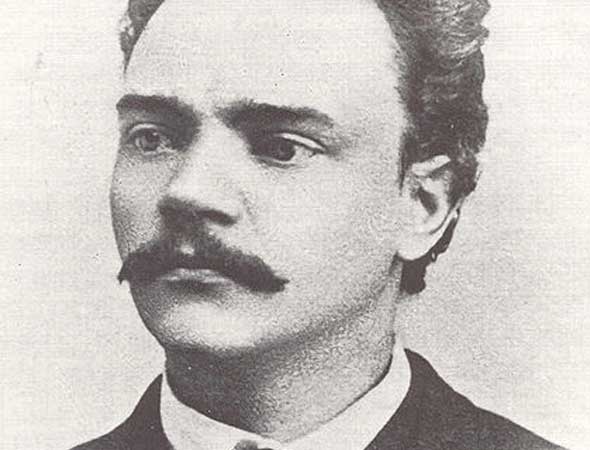Dvořák – Symphony No. 9 in E minor, Op. 95 “From the New World”

Antonin Dvořák
PERFORMANCE TIME: 40 MINUTES
- Adagio – Allegro molto
- Largo
- Molto vivace
- Allegro con fuoco
Despite its inescapable nickname, this was not an “American” symphony, but rather a symphony “from the New World.” Dvořák was deeply inspired by American musical sources in composing it. Drawing upon Indian songs and African American spirituals, this symphony broadly captures the spirit of both traditions without specifically quoting individual melodies. Listeners everywhere recognize the distinctively American sound in “From the New World” as soon as they hear it. The symphony opens with a portentous adagio that gives way to a quick allegro, with a minor key that seems to communicate the excitement of discovery and unknown frontiers. The emphasis on brasses and woodwinds, as opposed to strings, gives the movement a fresh sound that separates it from European idioms.
The first of these melodies—to some listeners, at least—is a solo theme for flute in the first movement that may be suggestive of the spiritual “Swing Low, Sweet Chariot.” But it is in the largo in the second movement, which has gained acceptance as the song “Goin’ Home,” that we begin to hear it most clearly. Whether it existed in song form before the symphony was written has not been settled beyond doubt; we do know that in gaining knowledge of the African American legacy of folk song in America— including the deeply moving “sorrow songs” combining the themes of death, loss, and physical return to the Creator—Dvořák worked with a remarkable African American named Harry Burleigh, who knew this music firsthand and whose blind grandfather was a former slave. “Goin’ Home” certainly has all the characteristics of these songs. It is likely (but not certain) that while working on the symphony, Dvořák demonstrated the melody for Burleigh, who later executed it as a song with the lyricist William Arms Fisher.
While the idea of the sorrow song supports this idea in a general way, the frenzied scherzo that follows the second movement largo seems much more specific. The musicologist Joseph Horowitz relates it to the dance of Pau-Puk-Keewis at Hiawatha’s wedding, and Hiawatha’s pursuit through the forest; wild and percussive, its whirling rhythms match both the American Indian sources Dvořák studied in the U.S. and the driving metrics of Longfellow’s poem, underlined by re-emergent timpani. It can also suggest Hiawatha’s own feelings of grief and expiation. But when specific lines of Hiawatha’s dance are juxtaposed with the music of the scherzo, one cannot escape the conclusion that Dvořák wrote the movement as a literal dance for Pau-Puk-Keewis. Even more convincing is the matching of scherzo passages to Hiawatha’s chase through the woods and climactic battle with Pau-Puk- Keewis, even though this music—like the rest of the symphony—can be fully enjoyed as abstract expression for its own sake.
The final movement is an allegro that moves from the scherzo’s E minor into a triumphant E Major, the first sustained major section in the symphony. Here Dvořák seems to shift his gaze upward from a single, poignant tale to a distant horizon, presenting us with a nation’s destiny. There is a fateful quality to the clarion brasses and thundering percussion as the symphony draws to a close; in it, contemporary listeners heard a musical portrait of a young country that was youthful but vigorous and bold, ready for a place of leadership in the community of nations. It took more than a century, but Dvořák’s conception of an intrinsically American compositional style has finally prevailed not only in our great jazz composers, but also in the unclassifiable works by musicians such as Mark O’Connor and Béla Fleck, whose creations can quote Bach and Bluegrass in a single bar.











